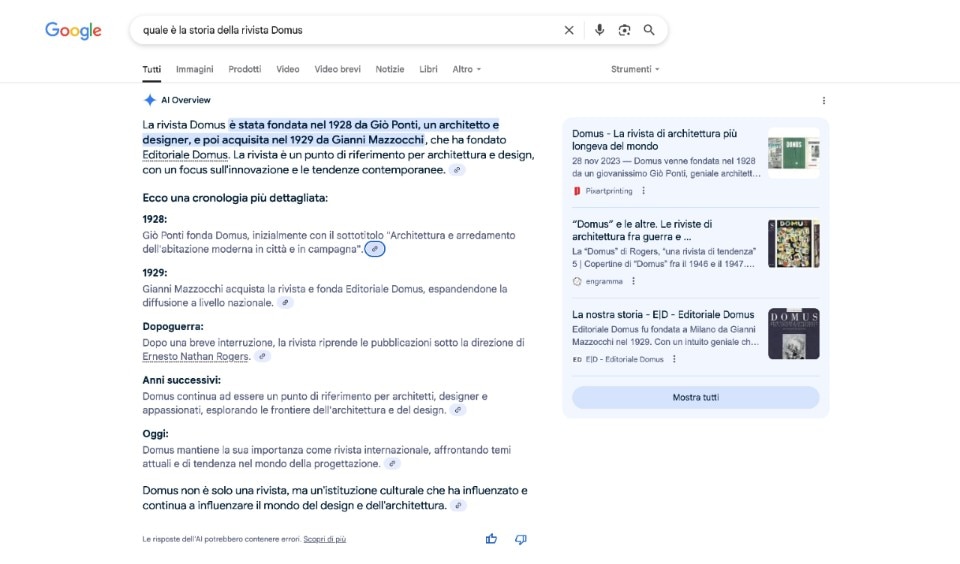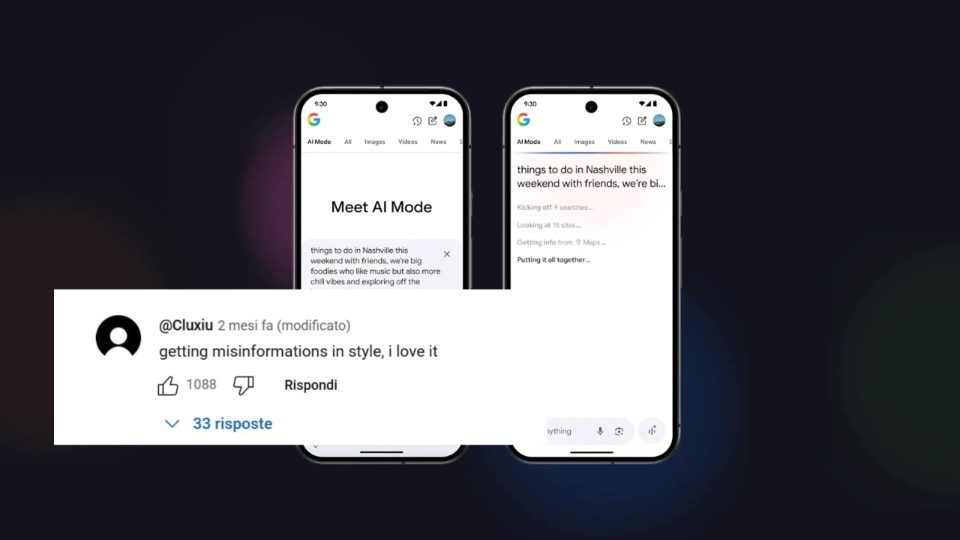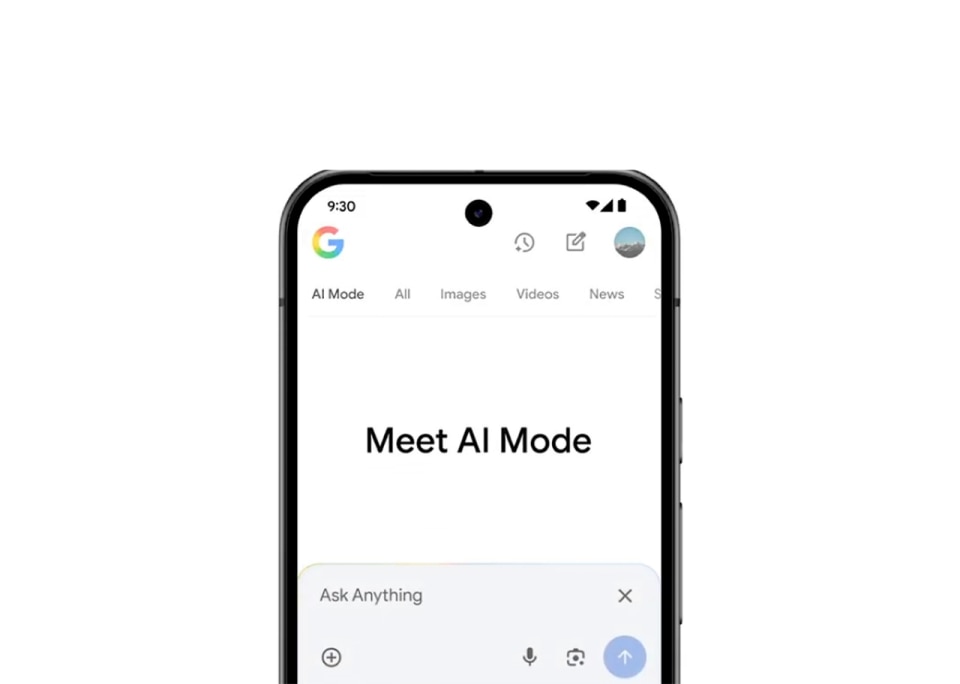Google AI Overviews and AI Mode, the two latest artificial intelligence features in Google Search, could jeopardize the business models of publishers and many online platforms. These tools go beyond the traditional snippet by offering richer and more comprehensive summaries of web content. As a result, users may feel no need to click through to the original sources — leading to a drop in page views and readership. In essence, these features could have serious side effects for site traffic and conventional revenue models. But first, let’s clarify the differences between AI Overviews and AI Mode, which are at different stages of rollout.
Google AI Overviews

AI Overviews is a feature in Google Search that launched in the U.S. in 2024 and expanded to Italy in March 2025. It provides AI-generated summaries directly within the search results. Currently, it doesn’t appear for every topic — only when Google’s AI deems a summary helpful and the user is logged into their personal account. The output is a concise answer generated from one or more online sources, accompanied by site names, snippets, and links. Users can give feedback on the quality of the result. AI Overviews is ideal for quick answers, deeper dives, or verifying information.
Google AI Mode
AI Mode is a new chatbot-style search mode that recently launched in the U.S. and India (in English only) after completing its experimental phase. To access it, users must be logged into their Google account and select the “AI Mode” label on the homepage of Google Search. It works on both desktop and mobile (iOS and Android), via the latest version of the Google app, under the Search Labs section.
The interface appears as a standard chat box where users can type questions or use voice input. The result is a structured answer — sometimes including bullet points and deeper insights. On the right-hand side, Google displays the consulted sources, along with their names and snippets.
AI Mode is ideal for complex queries or multi-step tasks — much like ChatGPT’s “Search the Web” feature. Some sections of the generated response are tagged with an anchor icon to highlight cited sources. The app also includes image upload capabilities and integration with Google Lens, effectively allowing users to generate queries based on visual input.
Pros and Cons of Google’s AI Search Features
Google’s AI-powered tools simplify access to information by speeding up research and providing clear links to sources. They also make it easier to explore complex topics. The main downside, however, is the potential for inaccurate content — a risk that Google itself acknowledges by stating, “AI responses may include mistakes.” These tools are still in an early phase, and generative AI is well known for “hallucinations”: inconsistent or incorrect answers, fabricated data, or outright false claims. That said, when reliable sources are used, the results are generally accurate.
The biggest concern — as voiced by the U.S. publishers’ association — is that AI-generated responses reduce both traffic and revenue for news outlets. “Links were the last redeeming quality of search that gave publishers traffic and revenue,” said Danielle Coffey, CEO and president of the News/Media Alliance, referring to AI Mode. “Now Google just takes content by force and uses it with no return, the definition of theft. The DOJ remedies must address this to prevent continued domination of the internet by one company.” Currently, there appears to be no way for publishers to opt out of these results without incurring other negative consequences.

According to a recent Digiday report, average traffic could decline by about 25%, resulting in billions of dollars in lost revenue. And the impact doesn’t end there: at the most recent Google Marketing Live 2025 event, the company announced plans to integrate ads, sponsored product links, and commercial suggestions based on user location into AI-powered search responses.
Google non è un kamikaze
While many publishers are seeing a surge in traffic from Google Discover — the mobile-first feature that anticipates user interests with a curated, personalized selection of articles — AI Overviews and AI Mode undeniably improve the search experience. Within Google’s strategic framework, these tools may help contain the growing success of emerging AI-based competitors like ChatGPT or Perplexity. At the same time, they aim to increase user loyalty (especially among younger audiences) and unlock new advertising opportunities.
That last point might represent a potential upside for publishers: new, more targeted ad formats — especially given that users must be logged in to access these features. There’s also the visibility factor for smaller or “outsider” websites: many struggle to appear on the first two pages of search results (where it matters most), and this could be a real opportunity — especially for those who focus on quality and in-depth content. In other words, this is a new playing field, and for once, longevity may no longer be the deciding factor.
Opening image: Photo Pawel Czerwinski from Unsplash


